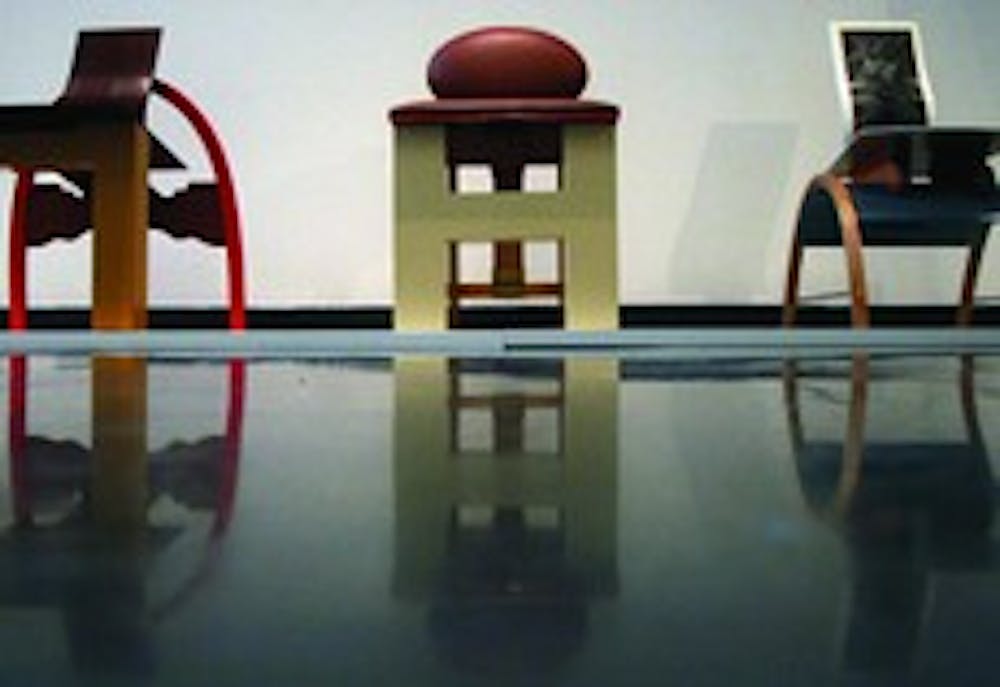Sure, the crafts you made at summer camp found their way into your mother's permanent collection, but that's nothing compared to what you'll find at the AU Museum in the Katzen Arts Center this summer. Two new exhibits, open now and continuing through the first half of August, show off just what craft can really be.
Craft differs from art in several ways, most notably in a focus on function and materials considered below the world of art, such as clay, wood and paper, philosophy of art scholar Larry Shiner explains in the "Encyclopedia of Aesthetics." The exhibits at the AU Museum frustrate this view in a way similar to the Arts and Crafts Movement of the early 20th century.
"Richard Shaw and Robert Hudson: Collaborations" looks at the two sculptors' works from 1971 through the present, including - as you may have guessed from the title - many collaborations. Though nearly all of the pieces have the name of one artist assigned to them, it is common knowledge that their hands were quite literally in each other's work.
Their work, like all good craft, has function. Boxes, teapots and jars are disguised with casts of figurines jigsawed together and trompe l'oeil effects. Their work ranges from the purely abstract to the hyper-real, and just about all of it is ceramic.
This may not seem like an astonishing assertion, but a pillow so touchably soft you simply must try or a book of sheet music asking to be played beg a reminder. The realistic still life set-ups seem to play with the idea of vanitas paintings, complete with skulls, musical instruments and fine china. While the inspiration is all about the ephemeral, Shaw and Hudson's pieces are extraordinarily permanent representations of such objects. Here, you will find card houses that will not fall and books that will never reveal the rest of the story. Shaw and Hudson play with the art world on many levels; they owe their constructions to the legacy of dada, use imagery reminiscent of Jasper Johns and Pablo Picasso and even name a piece for Joan Miró.
Visitors need only to head upstairs for a glimpse at further adoration. "Garry Knox Bennett: Call Me a Chairmaker" offers viewers the chance to interrogate some of the most iconic objects they have ever deigned to sit on. Bennett adapts famous chair designs to his purposes, combining styles, morphing one into another and sometimes even interpreting a design through the eyes of a third party. Martha Stewart only wishes she had the furniture-making prowess behind Bennett's interpretation of her dream patio chair.
Bennett's wit is in every aspect of the exhibition. When he isn't invoking of the ghost of Frank Lloyd Wright by adding a wiggle to one of the geometric master's designs, he is getting friend and writer John Marlowe to pen his first-person artist's statements. The statements may not be the work of the artist himself, but they take on the same whimsical idea of being down river from the fount. Bennett's numerous versions of Rietveld's zig-zag chair require as much knowledge of the artist as Marlowe's interpretations of Bennett's thoughts and art.
Though his statements often prove playfully antithetical, they ring true. Marlowe sums up Bennett best when he attributes the artist with the aphorism, "A good joke is better than bad art." It is the sort of humble explanation you would expect from the artist. Bennett might make a few good jokes but, at their core, Bennett's pieces are anything but bad art, and even better craft.
You can reach this staff writer at kpowell@theeagleonline.com.





